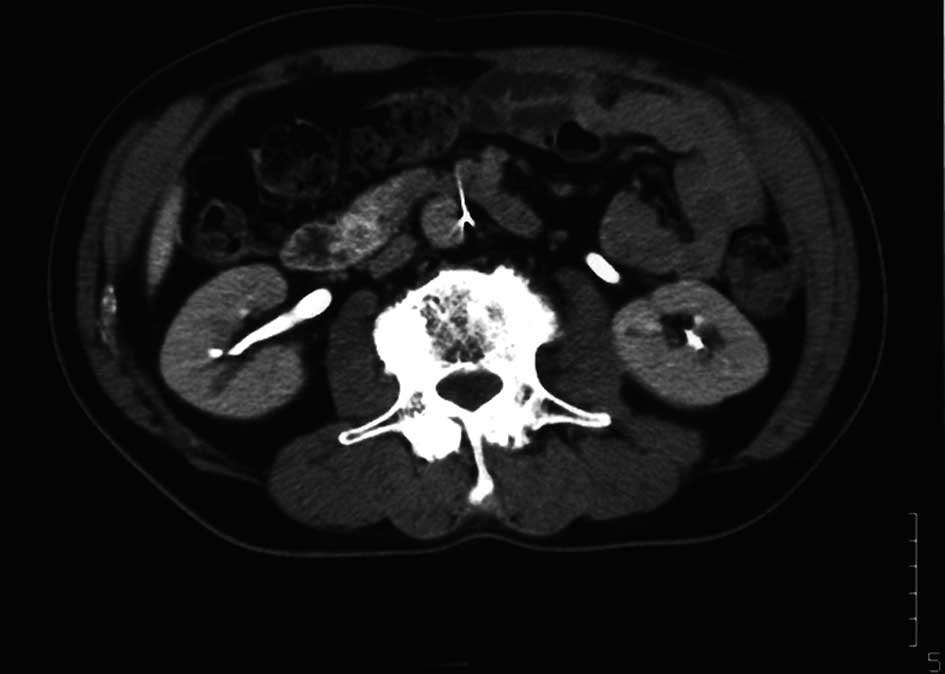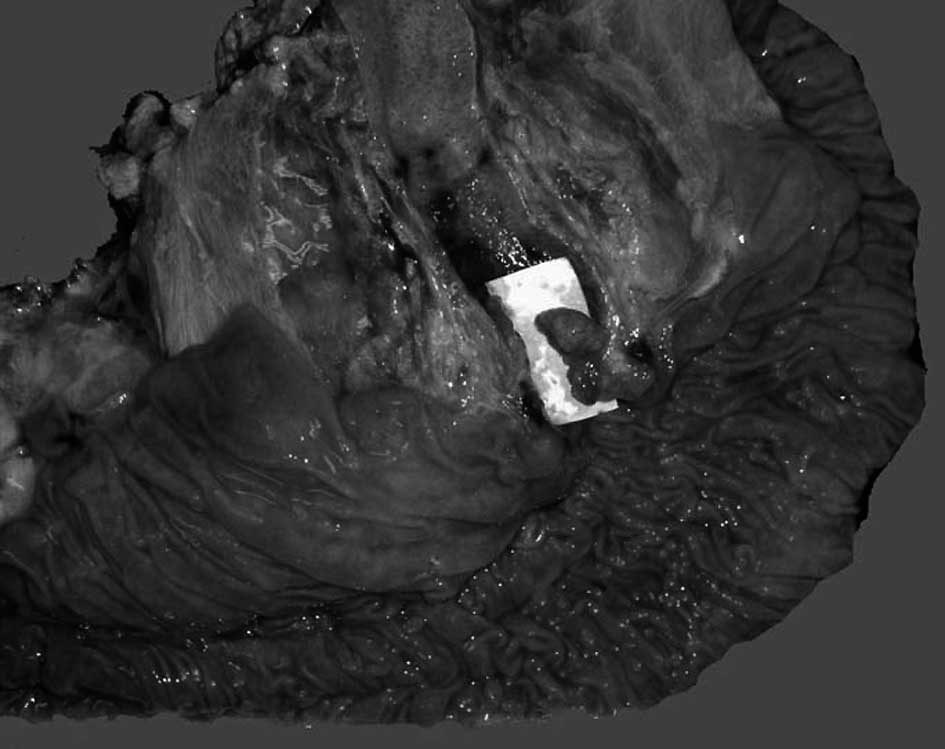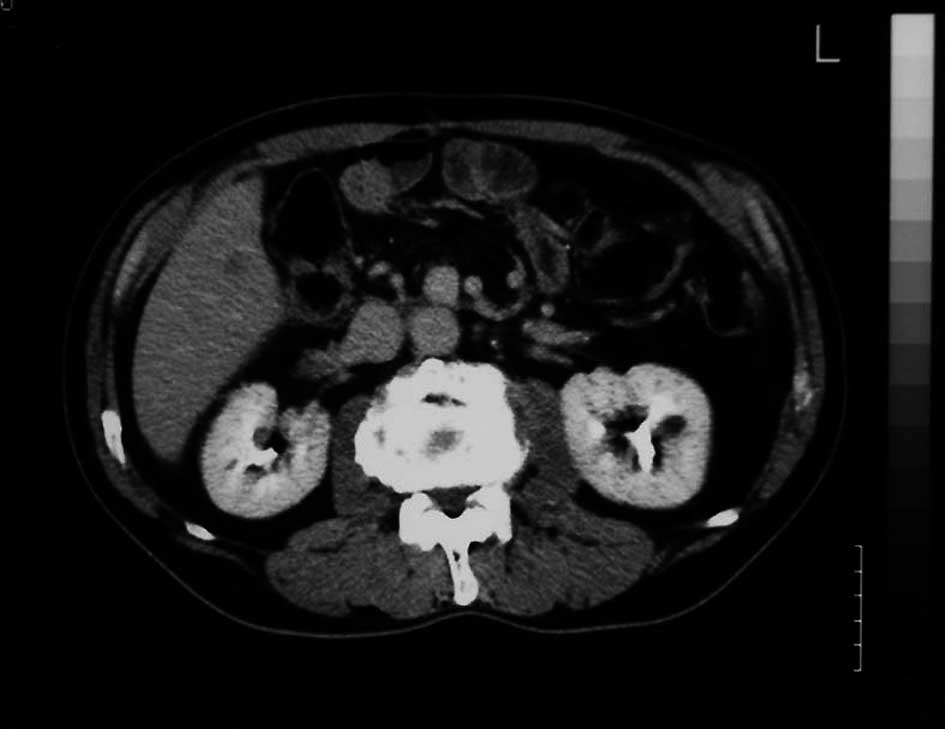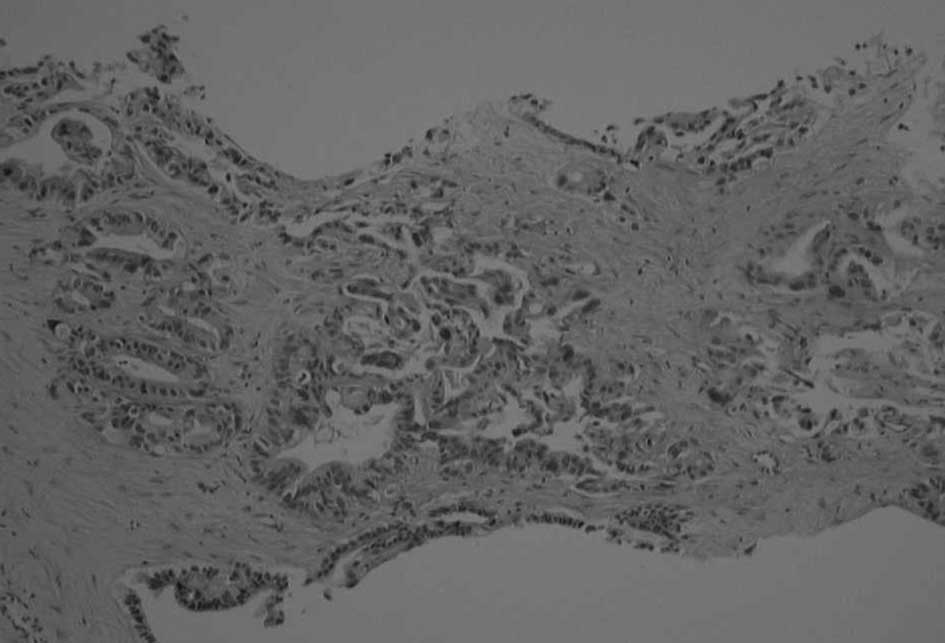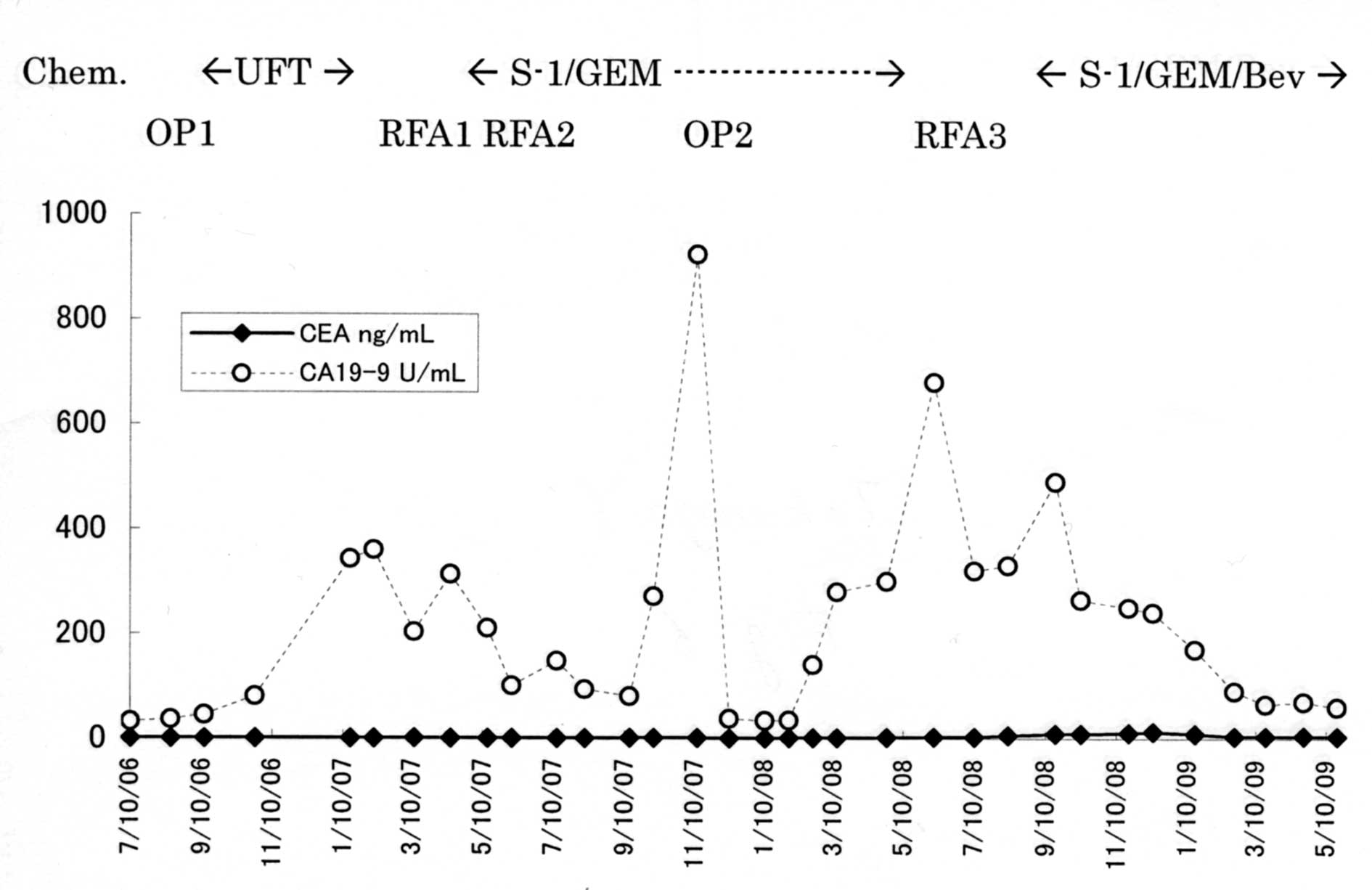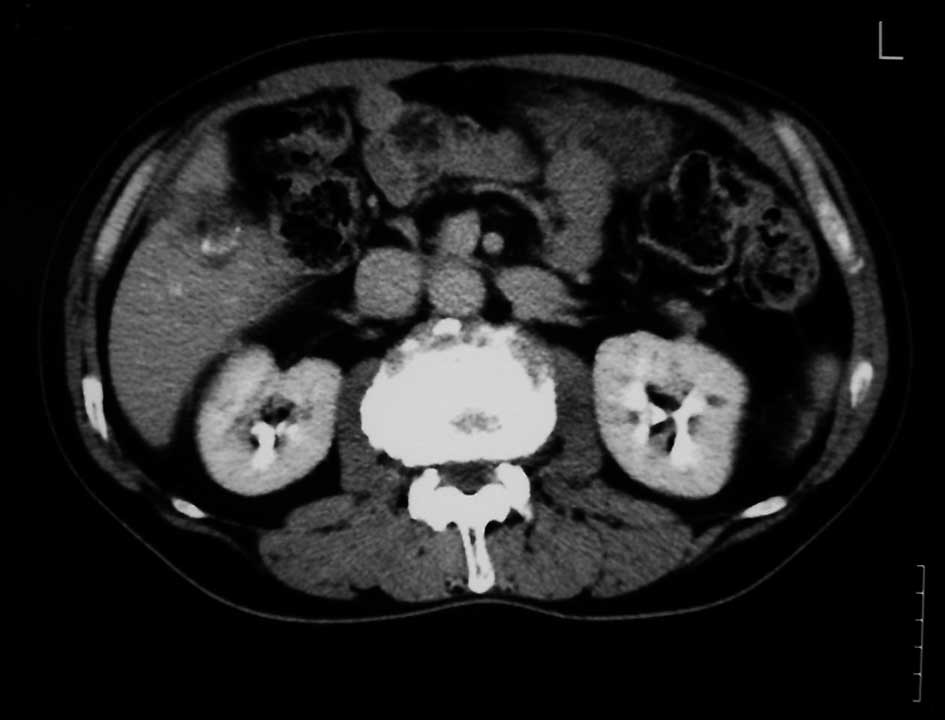|
1
|
Nakeeb A, Pitt HA, Sohn TA, Coleman J,
Abrams RA, Piantadosi S, Hruban RH, Lillemoe KD, Yeo CJ and Cameron
JL: Cholangiocarcinoma: a spectrum of intrahepatic, perihilar and
distal tumors. Ann Surg. 224:463–475. 1996. View Article : Google Scholar : PubMed/NCBI
|
|
2
|
Fong Y, Blumgart LH, Lin E, Fortner JG and
Brennan MF: Outcome of treatment for distal bile duct cancer. Br J
Surg. 83:1712–1715. 1996. View Article : Google Scholar : PubMed/NCBI
|
|
3
|
Bortolasi L, Burgart LJ, Tsiotos GG,
Lugue-De Leon E and Sarr MG: Adenocarcinoma of the distal bile duct
(a clinicopathologic outcome analysis after curative resection).
Dig Surg. 17:36–41. 2000.PubMed/NCBI
|
|
4
|
Nagorney DM, Donohue JH, Farnell MB,
Schleck CD and Ilstrup DM: Outcome after curative resection of
cholangiocarcinoma. Arch Surg. 128:871–879. 1993. View Article : Google Scholar : PubMed/NCBI
|
|
5
|
Kayahara M, Nagakawa T, Ueno K, Ohta T,
Tsukioka Y and Miyazaki I: Surgical strategy for carcinoma of the
pancreas head area based on clinicopathologic analysis of nodal
involvement and plexus invasion. Surgery. 117:616–623. 1995.
View Article : Google Scholar : PubMed/NCBI
|
|
6
|
Shirasaka T, Shimamoto Y, Ohshimo H,
Yamaguchi H, Kato T, Yonekura K and Fukushima M: Development of a
novel form of an oral 5-fluorouracil derivative (S-1) directed to
the potentiation of the tumor selective toxicity of 5-fluorouracil
by two biochemical modulators. Anticancer Drugs. 7:548–557. 1996.
View Article : Google Scholar : PubMed/NCBI
|
|
7
|
Okusaka T, Funakoshi A, Furuse J, Boku N,
Yamao K, Ohkawa S and Saito H: A late phase II study of S-1 for
metastatic pancreatic cancer. Cancer Chemother Pharmacol.
61:615–621. 2008. View Article : Google Scholar : PubMed/NCBI
|
|
8
|
Ueno H, Okusaka T, Ikeda M, Takezako Y and
Morizane C: Phase II study of S-1 in patients with advanced biliary
tract cancer. Br J Cancer. 15:1769–1774. 2004. View Article : Google Scholar : PubMed/NCBI
|
|
9
|
Lin MH, Chen JS, Chen HH and Su WC: A
phase II trial of gemcitabine in the treatment of advanced bile
duct and periampullary carcinoma. Chemotherapy. 49:154–158. 2003.
View Article : Google Scholar : PubMed/NCBI
|
|
10
|
Okusaka T, Ishii H, Funakoshi A, Yamao K,
Ohkawa S, Saiot S, Saito H and Tsuyuguchi T: Phase II trial of
single-agent gemcitabine in patients with advanced biliary tract
cancer. Cancer Chemother Pharmacol. 57:647–653. 2006. View Article : Google Scholar : PubMed/NCBI
|
|
11
|
Hurwitz H, Fehrenbacher L, Novotny W,
Cartwright T, Hainsworth J, Heim W, Berlin J, Baron A, Griffing S,
Holmgren E, Ferrara N, Fyfe G, Rogers B, Ross R and Kabbinavar F:
Bevacizumab plus irinotecan, fluorouracil and leucovorin for
metastatic colorectal cancer. N Eng J Med. 350:2335–2342. 2004.
View Article : Google Scholar : PubMed/NCBI
|
|
12
|
Todoroki T, Koike N, Morishita Y, Kawamoto
T, Ohkochi N, Shoda J, Fukuda Y and Takahashi H: Patterns and
failure after curative resections of carcinoma of the ampulla of
Vater. Ann Surg Oncol. 10:1176–1183. 2003. View Article : Google Scholar : PubMed/NCBI
|
|
13
|
Bhuiya MR, Nimura Y, Kamiya K, Kondo S,
Fukata S, Hayakawa N and Shionoya S: Clinicopathologic studies in
perineural invasion of bile duct carcinoma. Ann Surg. 215:344–349.
1992. View Article : Google Scholar : PubMed/NCBI
|
|
14
|
Chan C, Herrera MF, De la Garza L,
Quantanilla-Martinez L, Vargas-Vorackova F, Richaud-Patin Y,
Llorente L, Uscanga L, Robles-Diaz G and Leon E: Clinical behavior
and prognostic factors of periampullary adenocarcinoma. Ann Surg.
222:632–637. 1995. View Article : Google Scholar : PubMed/NCBI
|
|
15
|
Woo SM, Ryu JK, Lee SH, Yoo JW, Park JK,
Kim YT, Jang JY, Kim SW, Kang GH and Yoon YB: Recurrence and
prognostic factors of ampullary carcinoma after radical resection:
comparison with distal extrahepatic cholangiocarcinoma. Ann Surg
Oncol. 14:3195–3201. 2007. View Article : Google Scholar
|
|
16
|
Takada T, Nimura Y, Katoh H, Nagakawa T,
Nakayama T, Matsushiro T, Amano H and Wada K: Prospective
randomized trial of 5-fluorouracil, doxorubicin and mitomycin C for
non-resectable pancreatic and biliary carcinoma: multicenter
randomized trial. Hepatogastroenterology. 45:2020–2026. 1998.
|
|
17
|
Takada T, Amano H, Yasuda H, Nimura Y,
Matsushiro T, Kato H, Nagakawa T and Nakayama T: Is postoperative
adjuvant chemotherapy useful for gallbladder carcinoma? A phase III
multicenter prospective randomized controlled trial in patients
with resected pancreaticobiliary carcinoma. Cancer. 95:1685–1695.
2002. View Article : Google Scholar
|
|
18
|
Nakamura K, Yamaguchi T, Ishihara T, Sudo
K, Kato H and Saisho H: Phase II trail of oral S-1 combined with
gemcitabine in metastatic pancreatic cancer. Br J Cancer.
94:1575–1579. 2006.PubMed/NCBI
|
|
19
|
Kindler HL, Niedzwiecki D, Hollis D,
Martin EW, Schilsky RL and Goldberg RM: A double-blind,
placebo-controlled, randomized phase III trial of gemcitabine (G)
plus bevacizumab (B) versus gemcitabine plus placebo (P) in
patients (pts) with advanced panreatic cancer (PC): a preliminary
analysis of Cancer and Leukemia Group B (CALGB) 80303. In: ASCO
Gastrointestinal Cancer Symposium. abs. 108. 2007
|



